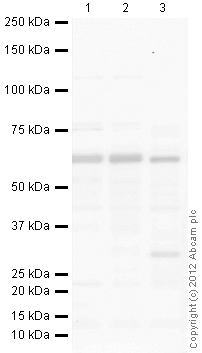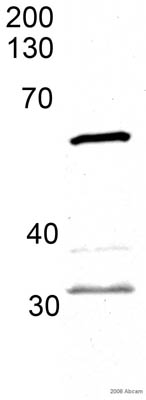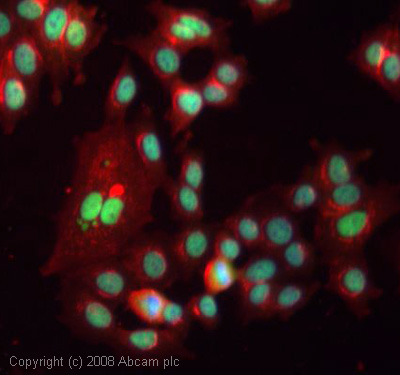Anti-HDAC1 antibody
| Name | Anti-HDAC1 antibody |
|---|---|
| Supplier | Abcam |
| Catalog | ab33278 |
| Prices | $398.00 |
| Sizes | 100 µg |
| Host | Rabbit |
| Clonality | Polyclonal |
| Isotype | IgG |
| Applications | IHC-F WB ICC/IF ICC/IF |
| Species Reactivities | Rat, Human, Xenopus, Zebrafish, Mouse, Chicken, Bovine |
| Antigen | Synthetic peptide conjugated to KLH derived from within residues 50 - 150 of Zebrafish HDAC1 |
| Description | Rabbit Polyclonal |
| Gene | HDAC1 |
| Conjugate | Unconjugated |
| Supplier Page | Shop |
Product images
Product References
Inhibition of endothelial ERK signalling by Smad1/5 is essential for - Inhibition of endothelial ERK signalling by Smad1/5 is essential for
Zhang C, Lv J, He Q, Wang S, Gao Y, Meng A, Yang X, Liu F. Nat Commun. 2014 Mar 11;5:3431.
Histone deacetylase expression patterns in developing murine optic nerve. - Histone deacetylase expression patterns in developing murine optic nerve.
Tiwari S, Dharmarajan S, Shivanna M, Otteson DC, Belecky-Adams TL. BMC Dev Biol. 2014 Jul 9;14:30.
Distinct functional and temporal requirements for zebrafish Hdac1 during neural - Distinct functional and temporal requirements for zebrafish Hdac1 during neural
Ignatius MS, Unal Eroglu A, Malireddy S, Gallagher G, Nambiar RM, Henion PD. PLoS One. 2013 May 7;8(5):e63218.



